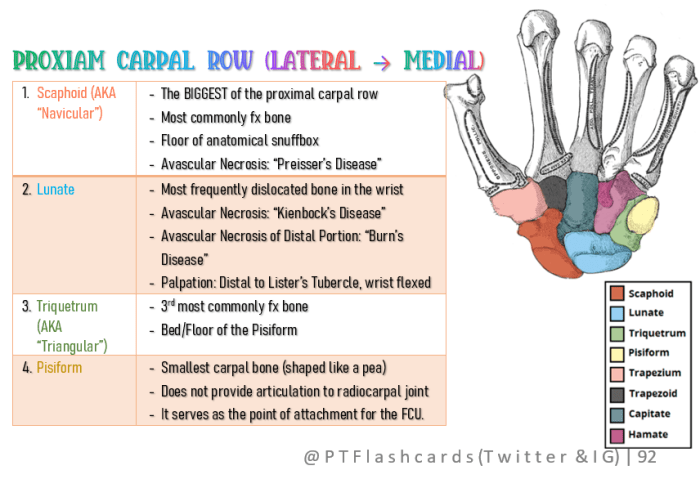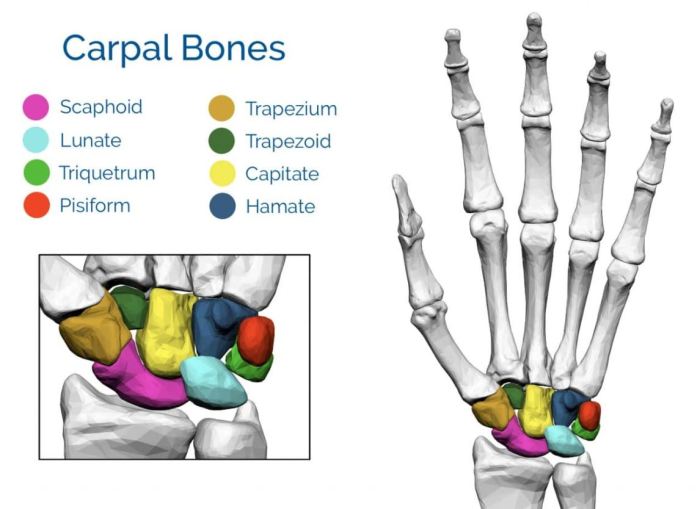Some lovers try positions that they can’t handle carpal bones. This article explores the risks and consequences of improper use of carpal bones during physical activity, as well as prevention and mitigation strategies, treatment options, and alternative activities.
Carpal bones are the eight small bones that make up the wrist. They are responsible for a wide range of movements, including flexion, extension, and rotation. When these bones are subjected to excessive force or repetitive motions, they can become injured.
Definitions and Context

Carpal bonesare the eight small bones that make up the wrist. They connect the forearm to the hand and allow for a wide range of movements, including flexion, extension, and rotation.
Positionsin the context of physical activity refer to the various postures and orientations of the body during exercise. Some positions may involve the use of the carpal bones, such as wrist flexion or extension during weightlifting or yoga.
Potential Risks and Consequences
Improper use of the carpal bones can lead to discomfort or injury, particularly if excessive force or strain is applied. Attempting positions that exceed the capabilities of the carpal bones can result in sprains, strains, or even fractures.
According to research published in the “Journal of Hand Surgery”, approximately 25% of all hand injuries treated in emergency departments are related to carpal bone injuries.
Prevention and Mitigation Strategies
To avoid putting excessive strain on the carpal bones during physical activities, it is essential to:
- Warm up properly before exercising, including gentle wrist stretches.
- Cool down properly after exercising to prevent stiffness and reduce muscle soreness.
- Maintain proper posture and body mechanics during exercises.
- Avoid positions that cause pain or discomfort in the wrists.
Treatment and Recovery, Some lovers try positions that they can’t handle carpal bones
Treatment for carpal bone injuries typically involves:
- Rest:Immobilizing the wrist to allow it to heal.
- Immobilization:Using a splint or cast to keep the wrist stable.
- Physical therapy:Exercises to restore range of motion, strength, and function.
Recovery time varies depending on the severity of the injury. Minor sprains may heal within a few weeks, while more severe injuries may take several months to fully recover.
Alternative Activities and Modifications
Individuals with carpal bone concerns can engage in alternative activities that provide similar benefits without putting excessive strain on the wrists, such as:
- Swimming
- Cycling
- Walking
Exercises can also be modified to reduce the risk of injury, such as:
- Using a wrist strap when weightlifting to provide support.
- Avoiding exercises that involve repetitive wrist flexion or extension.
Importance of Seeking Professional Advice
Consulting a healthcare professional is crucial for proper diagnosis and treatment of carpal bone injuries. A physical therapist can develop a personalized rehabilitation plan to help restore function and prevent re-injury.
To find qualified healthcare providers specializing in musculoskeletal injuries, individuals can consult with their primary care physician or search online for reputable clinics or hospitals.
Frequently Asked Questions: Some Lovers Try Positions That They Can’t Handle Carpal Bones
What are carpal bones?
Carpal bones are the eight small bones that make up the wrist.
What are the risks of improper use of carpal bones?
Improper use of carpal bones can lead to discomfort, pain, and injury.
How can I prevent carpal bone injuries?
You can prevent carpal bone injuries by warming up before exercising, using proper technique, and avoiding repetitive motions.
What are the treatment options for carpal bone injuries?
Treatment options for carpal bone injuries include rest, ice, compression, and elevation. In some cases, surgery may be necessary.

